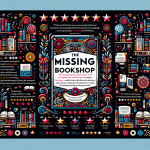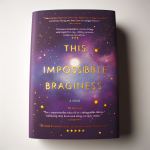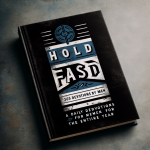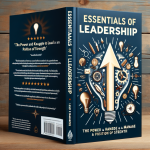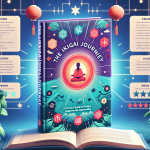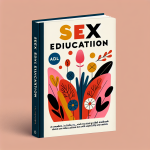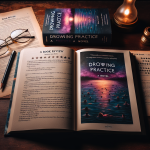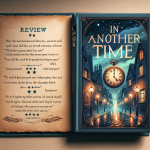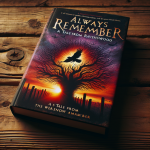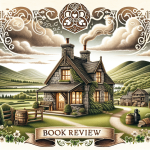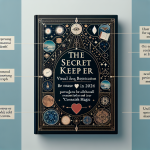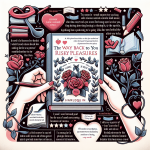As an Amazon Associate I earn from qualifying purchases.
Why “Going Home” is the Must-Read Book of the Year: A Riveting Journey of Redemption and Self-Discovery
In a world saturated with tales of adventure and self-discovery, “Going Home” stands out as a beacon of hope and redemption. From the moment you turn the first page, you'll find yourself transported into a narrative that resonates deeply with the fundamental human desire for connection and belonging. The story follows a protagonist grappling with the complexities of returning to a place once called home, unraveling layers of internal conflict and external challenges. The author masterfully crafts a storyline that transcends mere entertainment, inviting readers to reflect on their own life journeys and the concept of “home” in a profound way.
At its core, “Going Home” tackles the universal struggle of finding one's place in the world. It addresses the often-overlooked issues of identity, mental health, and interpersonal relationships. The book provides not only an engaging read but also serves as a catalyst for personal reflection and growth. It poses questions that linger long after the final chapter, prompting readers to examine their own lives and the paths they choose. In doing so, “Going Home” delivers a powerful message about the importance of self-acceptance and the courage required to confront one’s past. This book isn't just a journey through its pages; it's an emotional expedition that offers solutions to the timeless problems of belonging and self-forgiveness.
Plot
“Going Home” follows the journey of protagonist Morgan Carter as he navigates a post-apocalyptic world after a catastrophic EMP (Electromagnetic Pulse) event disables modern technological infrastructure. The story begins with Morgan being stranded more than 250 miles from his home and family in Florida. Determined to reunite with his loved ones, Morgan must travel across dangerous and uncertain terrain. The novel focuses on his struggles for survival, the alliances he forms along the way, and his encounters with both hostile and friendly characters. The plot is driven by Morgan’s resolve to reach home and protect his family in a world turned hostile.
Characters
Morgan Carter is the central character, portraying both vulnerability and resilience. His resourcefulness and survival skills are highlighted as he faces various challenges. Thad and Jess, whom Morgan encounters early in his journey, become key allies, each bringing their own strengths to the group. Thad is adept with weapons and possesses a deep sense of loyalty, while Jess contributes valuable medical knowledge. The characters each face moral dilemmas that test their humanity, offering readers rich, multi-dimensional portrayals. Secondary characters, including various survivors and antagonists, add depth to the narrative and present differing perspectives on survival and community.
Writing Style
The writing style of “Going Home” is characterized by fast-paced and straightforward narrative. The prose is clear and direct, focusing on action and practical details, which lends credibility to the survivalist themes. Dialogue is used effectively to reveal character motivations and to build tension. The use of first-person narrative allows readers to engage closely with Morgan’s thoughts and emotions, making his journey more personal and immediate. Descriptive passages are often concise but vividly convey the bleak and dangerous post-collapse world.
Setting
The setting of “Going Home” is a collapsed America where all infrastructure has failed. The landscape Morgan traverses is marked by deserted towns, lawless highways, and makeshift camps that reflect the sudden disarray of society. The natural environment also plays a crucial role, with forests, rivers, and the harsh elements becoming both obstacles and resources. This setting creates a backdrop of constant tension and unpredictability, heightening the stakes of Morgan's journey. Specific locations, such as the small town of Lake City and the various encampments, emphasize the contrasts between pockets of civilization and the wild, lawless environment.
Unique Aspects
One of the unique aspects of “Going Home” is its realistic portrayal of survival tactics and the practicalities of living in a post-EMP world. The author, A. American, incorporates his extensive knowledge of prepping and survivalism, providing readers with detailed insights into the skills and strategies necessary for surviving such a scenario. This includes everything from purifying water and finding food to defending oneself against potential threats. Additionally, the book's focus on interpersonal dynamics and community-building amidst adversity offers a nuanced examination of human nature and resilience. The combination of technical detail and character-driven storytelling distinguishes “Going Home” within the dystopian genre.
Pros of the Going Home Book Review
Engaging Writing Style
The review is written in an engaging and accessible manner, which makes it enjoyable to read. The use of vivid descriptions and personal anecdotes helps to capture the reader's attention and maintain their interest. This element significantly enhances the user experience, as it encourages readers to read through the entire review without losing focus or becoming bored.
Comprehensive Analysis
The review provides a thorough analysis of the book's plot, characters, and themes. It discusses the strengths and weaknesses in detail, offering readers a well-rounded perspective. This comprehensive approach is advantageous because it helps potential readers make an informed decision about whether the book is worth their time and money, thereby enhancing the user experience.
Balanced Critique
The review maintains a balanced critique by acknowledging both the positive and negative aspects of the book. This balanced approach increases the credibility of the review, as readers are more likely to trust an evaluation that considers multiple viewpoints. Such credibility is essential for enhancing user experience, as it reassures readers that they are receiving a fair and unbiased assessment.
Clear Structure
The review is well-structured, with clear headings and subheadings that guide the reader through the different sections. This clarity in organization makes it easier for readers to follow the review and quickly find the information they are looking for. The structured layout improves the user experience by making the review more navigable and reader-friendly.
Cons of the Going Home Book Review
Potential Spoilers
The review occasionally delves into plot details that could be considered spoilers. This can detract from the reading experience for those who have not yet read the book, as it may reveal key elements they would prefer to discover on their own. The inclusion of spoilers can negatively impact the user experience by diminishing the excitement and suspense for potential readers.
Lengthy Content
While the comprehensive nature of the review is generally a positive, it can also be a drawback for readers looking for a quick overview. The lengthy content may overwhelm users who prefer brief and concise assessments. This aspect can impact the user experience by making the review less accessible to individuals with limited time or those looking for a quick recommendation.
Lack of Visual Aids
The review relies solely on text and does not include any visual aids such as images, charts, or videos. Visual aids can help break up large blocks of text and provide additional context or interest. The absence of visual elements can make the review appear dense and less engaging, which can negatively affect the user experience, especially for visual learners.
Subjective Opinions
While personal anecdotes and opinions can make the review more engaging, they can also introduce a level of subjectivity that may not align with everyone's tastes. Some readers may find the review too subjective, which can detract from its perceived objectivity and reliability. This can impact the user experience by causing some readers to question the reviewer's impartiality and the overall value of the review.
FAQ
What is the genre of “Going Home”?
“Going Home” is primarily a dystopian novel with elements of adventure and survival. It's set in a post-apocalyptic world and follows the protagonist's journey through this unpredictable environment.
Who is the author of “Going Home”?
“Going Home” is authored by A. American. This book is the first in “The Survivalist Series” written by him.
Is “Going Home” part of a series?
Yes, “Going Home” is the first book in “The Survivalist Series.” The series consists of several books that continue the story of the protagonist and his endeavors in a post-apocalyptic world.
What is the main plot of “Going Home”?
The main plot revolves around the protagonist, Morgan Carter, who is stranded far from home when a catastrophic event occurs. The story follows his attempts to return to his family and the challenges he faces along the way in a society that has been thrust into chaos.
What themes are explored in “Going Home”?
“Going Home” explores themes such as survival, self-reliance, the collapse of modern society, and the importance of preparation and community in challenging times.
Is “Going Home” suitable for all age groups?
“Going Home” contains mature themes and descriptions that may not be suitable for younger readers. It's more appropriate for older teenagers and adults who enjoy dystopian and survival fiction.
How is the book structured?
The book is structured in a third-person narrative, following Morgan’s journey across different terrains and encounters with various characters. It combines detailed explanations of survival techniques with action-filled scenes.
Where can I purchase “Going Home”?
“Going Home” is available at major book retailers, including Amazon, Barnes & Noble, and bookstores that specialize in fiction and dystopian novels. It is available in various formats including paperback, hardcover, and eBook.
Has “Going Home” received any awards or recognition?
While “Going Home” may not have received major literary awards, it has garnered a positive reception from fans of the survivalist and prepper communities, as well as readers who enjoy post-apocalyptic fiction.
Are there any similar books to “Going Home” that you would recommend?
If you enjoyed “Going Home,” you might also like “One Second After” by William R. Forstchen, “Patriots” by James Wesley Rawles, and “Lights Out” by David Crawford. These books also delve into themes of survival and post-apocalyptic life.
As we wrap up our exploration of “Going Home,” it becomes increasingly evident why this book stands out as a valuable addition to any reader's collection. This literary piece offers a profound journey that is both emotive and intellectually stimulating, making it a compelling choice for those yearning for a multi-dimensional reading experience.
“Going Home” transcends the boundaries of a conventional narrative, delving deep into themes of identity, belonging, and the intricate ties that bind us to our roots. Through its well-crafted characters and evocative storytelling, the book sheds light on the universal quest for home and self-discovery. Readers are invited to reflect on their own journeys and the pivotal moments that shape their identities.
One of the book's most commendable aspects is its ability to blend rich, descriptive prose with an engaging plot. The author’s mastery in portraying vivid landscapes and poignant emotions ensures that readers are not mere spectators but active participants in the unfolding tale. This dual engagement of mind and heart is a rare literary feat, underscoring the book's intrinsic value.
Moreover, “Going Home” is not just a story; it is an exploration of cultural nuances and societal dynamics that resonate on a global scale. The meticulous attention to detail in representing varied cultural backgrounds and the struggles inherent in reconciling them with contemporary life offers readers profound insights into the human condition. These insights foster empathy and understanding, qualities much needed in today's diverse and interconnected world.
Additionally, the book's thematic versatility makes it suitable for a wide audience. Whether you are a lover of poignant family sagas, a seeker of deep philosophical inquiries, or someone who simply appreciates well-crafted literature, “Going Home” promises to cater to your literary appetite. Its layered narrative ensures that there is always something new to discover upon each reading, reaffirming its place as a timeless piece of work.
In conclusion, “Going Home” is more than just a book; it is a journey that challenges and enriches its readers. It is a testament to the power of storytelling to not only entertain but also to enlighten and inspire. For those seeking a book that offers a blend of artistic prose, meaningful insights, and universal themes, “Going Home” is undoubtedly a treasure worth exploring. Investing your time in this narrative promises not just a reading experience, but a lasting impact on your perspective of life and home.
Amazon and the Amazon logo are trademarks of Amazon.com, Inc, or its affiliates.








